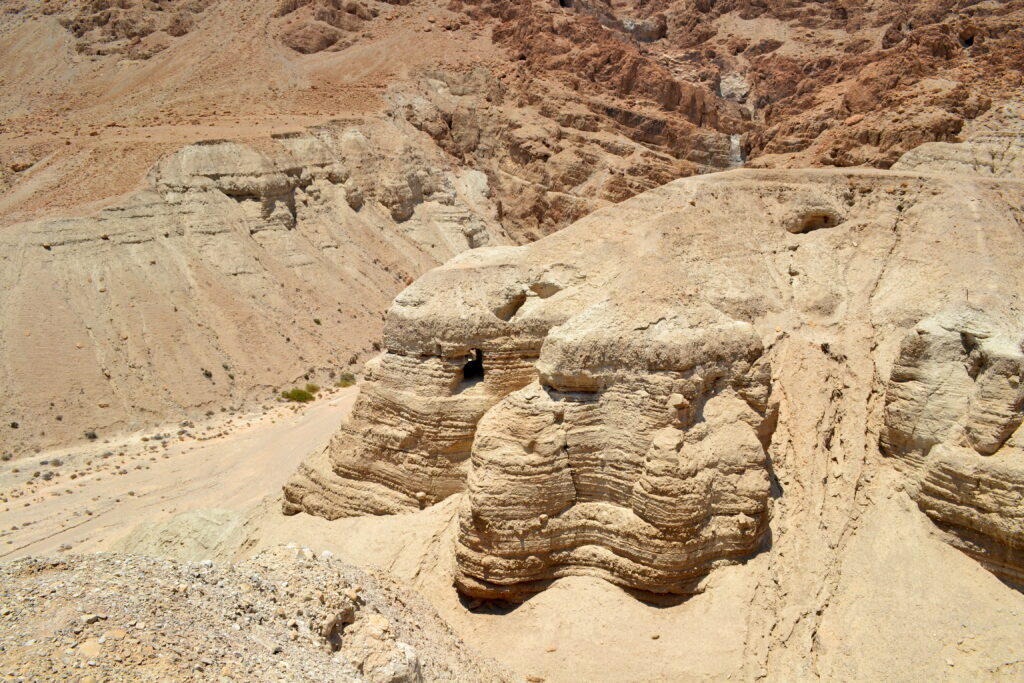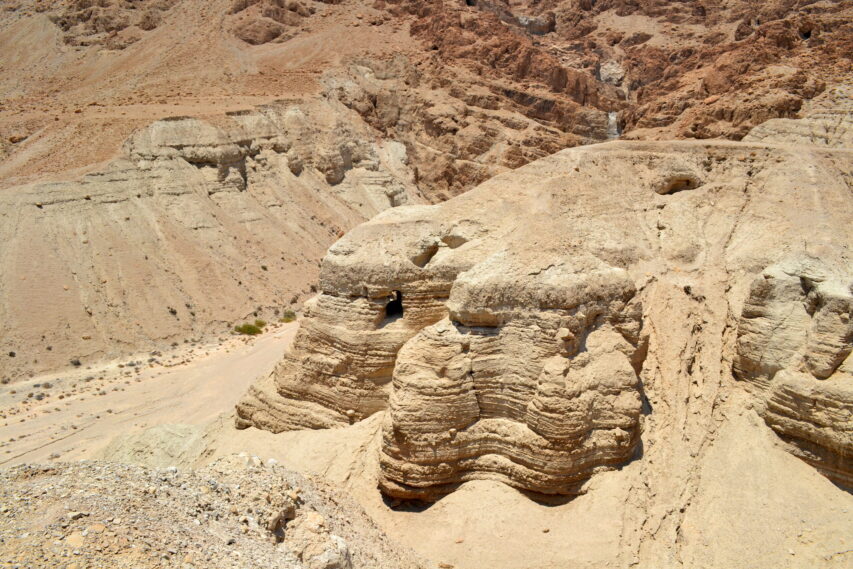
(Based on my previous article from February 2023)
If you could step into a time machine and get a first-hand look at the world of Jerusalem in the first century C.E., would you be interested? Would you be willing to pull back the cover and take a look, even if doing so revealed that we have been lied to for two thousand years?
Thanks to the discovery of the Dead Sea Scrolls, and the subsequent fight to have their contents released to the public by Robert Eisenman and a few other honest, dedicated scholars, we now have that chance.
When I first read about the discovery of hundreds of ancient scrolls in caves along the Dead Sea, many of which were biblical texts written two thousand years ago, I had no concept of their actual significance. I was still young and had not yet freed myself from the blinders of my family’s fundamentalist Christian limitations.
Like other Christians I knew, my first thought was not “wow this is great”, “I wonder if there are things the scrolls can tell us we did not know before about this period.”
Oh, no. I, like the other Christians I knew, immediately thought about validation. We were Lazar focused on two things and two things only: Do they say anything about Jesus; and how close are the biblical passages to the manuscripts we had before?
This was important because, until now, these documents were literally one thousand years older than the oldest known manuscripts of material Christians call the “Old Testament”. In other words, to “believers”, their value was not as a window into history that was previously unknown.
Their primary importance to fundamentalists was (and by the way, still seems to be) to demonstrate that the official stories and “scriptures” that were passed down to us by the Church were accurate and true. There was little to fear in that regard because their translation and publication were meticulously controlled by a handful of Catholic scholars. And they made sure no one who doesn’t drink the grape cool-aid had access to them.
Scholars had already debated over whether or not John the Baptist was from this group. As I explained in The Second Crucifixion of Jesus, the more we look at the scrolls, the harder it is to believe he was not.
To the extent that any of this material appears in the New Testament (and some of it almost certainly does), it was the New Testament writers who borrowed from it. That is because all of this material predates everything in the New Testament with one singular exception: the writings of Paul.
The epistles of Paul (at least the seven which scholars attribute to him as the genuine author) were written at the approximately the same time as the latest sectarian documents among the Dead Sea Scrolls. However, Paul and his audience were on the opposite side of the fence from the People at Qumran.
The scrolls anticipate a coming war between their caretakers (the “sons of Light”) and the forces of darkness. Much of that language seems remarkably similar to descriptions of Jesus’ followers in the New Testament.
Again, the latest of these scrolls were being written during the time the events described in the New Testament were going down. Also writing shortly after the caretakers of the scrolls were murdered, Josephus, a Jewish turncoat who became a historian for the Romans, published his account of the community at Qumran.
They were not entirely composed of peaceful monks as we were previously led to believe. They included a very militant faction which he called the “Fourth Philosophy,”[i] and credited their founding to a character named Judah the Galilean, whose movement is mentioned along with a greatly exaggerated rumor of its demise by Luke in Acts 5:37.[ii] In Josephus’ words:
. . . the nation was infected with this doctrine to an incredible degree; one violent war came upon us after another, and we lost our friends who used to alleviate our pain; there were also very great robberies and murders of our principle men[iii].
Throughout his writings, Josephus (writing from the Roman perspective) refers to those of this underground movement as “Robbers,” “Zealots,” and “Sicarii.” Today scholars and historians generally refer to them as “Zealots.” Zealots were the most radical and uncompromising faction of the Essenes. They were the driving force of the active arm of the Messianic Movement. As Robert Eisenman has shown, at least a couple of Jesus’ brothers were more than likely among their ranks.[iv]
The Zealots were guerilla fighters whose goal in life was to overthrow the Roman domination of their land and of their Temple.
Attempted insurrections and the threat of insurrections were constantly monitored and addressed by Roman officials.
The Sectarian Non-Biblical Scrolls Contain the Nuggets of Forgotten History
Many of the texts written and maintained by this group were never included in official versions of Jewish or Christian bibles. One of the most interesting of these, is a scroll known as the Damascus Document. Prior to the discovery of the caves in 1947, some locals over the years had already discovered some documents in caves near the Dead Sea. Various pieces and fragments were among the documents from the caves.
An entire manuscript of this document had been recovered from the Cairo Geniza and published by Rabbi Solomon Schechter in 1910. At the time, some claimed this document must be a forgery. But its authenticity was established when virtually identical fragments of the same document were found in the caves since 1947.
The document addresses its vision of the community in a lengthy narrative that speaks of figures that dominated the community’s thinking at the time. It also includes a set of rules for the community.
Initially, it was assumed (and some scholars still believe) that the document references two messiahs – one from the priestly line, and one from the Davidic line. But some scholars such as Robert Eisenman believe it is more likely that they anticipated one messiah who would descend from both lineages.
This was an anti-establishment, anti-Roman community. When one is planning an insurrection, you would not expect that the leaders would be identified by name. And such is the case here. Prominent individuals are identified by labels such as the “Teacher of Righteousness” and the “Spouter of Lies”.
For an in-depth inquiry into what these labels may mean, check my most recent book, Revelation and the AntiChrist. It explores how many of the New Testament mysteries can be explained without resorting to the magical thinking of most commentaries.
If you would like to receive notifications of new publications and blog postings, Click here:
[i] Josephus seems to identify this group as Essenes – but of a very militant variety. The other three philosophies identified by Josephus were the Pharisees, the Sadducees, and the peaceful Essenes. See Antiquities of the Jews Book XVIII, 1, 1-6.
[ii] Luke downplays the success of this movement claiming: “he also perished, and all, even as many as obeyed him, were dispersed.” But in fact, it was this same Movement that fought to defend Jerusalem in the last war that began in 66 C.E. Wars of the Jews. Book II, 17, 8.
[iii] Antiquities of the Jews, Book XVIII, 1, 1.
[iv] According to various historical sources, Jesus’ brothers Simon and Jude, fall “squarely into the Zealot tradition.” Eisenman, Robert. James the Brother of Jesus. New York: Penguin Books, 1997. pp. 858-866.

